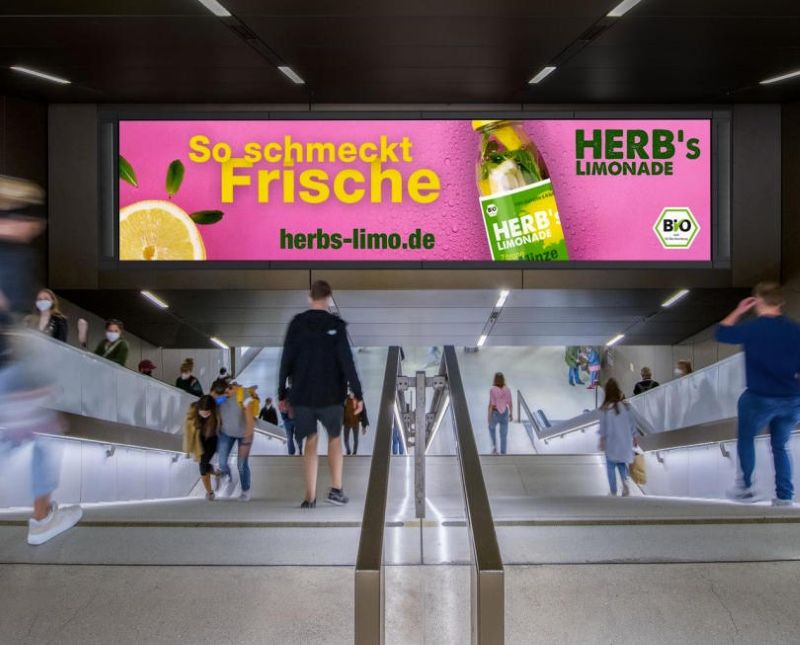The 2025 Subway Advertising Playbook: A Step-by-Step Guide to Dominating Urban Transit
2025-06-05Tianci MediaViews:125
Highlights
As cities grow denser and commute times lengthen, subway advertising remains one of the most effective ways to capture the attention of captive audiences. With 2025 bringing advancements in digital displays, data integration, and interactive ad formats, mastering the subway ad placement process is crucial for brands.
As cities grow denser and commute times lengthen, subway advertising remains one of the most effective ways to capture the attention of captive audiences. With 2025 bringing advancements in digital displays, data integration, and interactive ad formats, mastering the subway ad placement process is crucial for brands.

Step 1: Research & Market Selection📊
Before investing in subway advertising, identify high-traffic metro systems that align with your target demographic:
1.Top Global Markets:
New York City (5.5M daily riders)
Tokyo (8.7M daily riders)
London (5M daily riders)
Beijing (10M+ daily riders)
2.Emerging Hotspots:
Dubai Metro (AI-driven ad targeting)
Singapore MRT (high disposable income ridership)
Pro Tip: Use transit authority reports (e.g., MTA’s rider analytics) to pinpoint stations with your ideal customer profile.
Step 2: Choose Your Ad Format 🖼️
2025’s subway advertising options go beyond traditional posters:
Format | Best For | Avg. Cost (2025) |
|---|---|---|
Digital Screens | Real-time content updates | 5K–50K/month |
Platform Domination | Full station takeovers | 100K–500K/campaign |
Interactive AR Ads | Gamified engagement | 20K–100K |
Train Wraps | High-impact brand awareness | 50K–300K |
Example: A sneaker brand uses AR ads at Shinjuku Station—riders "try on" shoes via QR codes.
Step 3: Partner with Transit Media Agencies🤝
Specialized agencies streamline subway advertising logistics:
Key Players:
JCDecaux
Tianci Media
Outfront Media
Titan360
What They Handle:
Permits & compliance
Installation/maintenance
Performance tracking
Red Flag: Avoid long-term contracts before testing a station’s audience response.

Step 4: Leverage Data for Hyper-Targeting🔍
2025’s smart metros integrate first-party data:
Peak Hours: Target commuters (7–9 AM, 5–7 PM) with urgency-driven CTAs.
Demographic Triggers: Adjust creatives based on real-time crowd analytics (e.g., luxury ads at business districts).
Weather-Adaptive Ads: Promote umbrellas in rainy forecasts via digital screens.
Case Study: A coffee chain increased foot traffic 34% by displaying ads only during morning rush hours.
Step 5: Design for the Subway Environment🎨
Effective subway advertising demands context-aware creatives:
3-Second Rule: 70% of riders glance at ads for ≤3 seconds—use bold text and minimal copy.
Color Psychology: High-contrast palettes (e.g., yellow/black) boost recall by 40%.
QR Codes: Place at eye level—Seoul Metro campaigns saw 22% scan rates.
Fail-Proof Checklist:
✅ Test visibility from 10+ feet
✅ Avoid intricate details (viewed on-the-move)
✅ Include tactile elements for ADA compliance

Step 6: Measure & Optimize 📈
2025’s attribution tools go beyond impressions:
Foot Traffic Lift: Partner with nearby stores for geofenced validation.
Brand Lift Studies: Pre/post-campaign surveys at stations.
Social Amplification: Track hashtags from interactive ads (e.g., #TokyoMetroChallenge).
Optimization Hack: Swap underperforming creatives weekly using digital screens’ cloud CMS.
The Future: AI & Predictive Placements🤖
By late 2025, expect:
AI-Powered Dynamic Ads: Screens auto-adjust to rider demographics (age/gender detection).
Programmatic Subway Buys: Real-time bidding for digital ad slots.
Holographic Displays: 3D projections at major hubs (piloted in Dubai).
Key Takeaway
Winning at subway advertising in 2025 requires blending high-impact formats with surgical targeting. Start with a 3-month test at one flagship station, then scale based on hard metrics—not hunches.
“Subway ads don’t just ride alongside commuters—they invade their daily narratives.”










